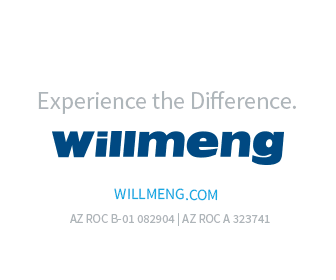Don't Wait to Comply with ASC 842

New accounting standard requires many types of leases to be added to corporate balance sheets.
Compliance with ASC 842, a new lease accounting standard from the Financial Accounting Standards Board (FASB), has preoccupied the accounting and finance departments of many companies since it was finalized in February 2016. The deadline for public companies to comply was December 2019, and while that date has come and gone, a Deloitte survey released earlier this year shows that after the deadline, 77% of respondents said their companies were either unprepared or only somewhat prepared to comply with ASC 842. The original regulations granted private companies an additional year to comply.
Public companies have faced many challenges since the deadline passed, with inadequate software often being the top issue. These challenges, which were exacerbated by the COVID-19 pandemic, have prompted FASB to enact a one-year extension for private companies. The new deadline is December 2021.
The impact of this delay is significant. While it provides some breathing room, private companies should not wait to start working toward compliance. They should avoid the pitfalls of public companies that struggled with the compliance deadline, and they must develop a long-term, sustainable approach to adopting ASC 842.
What is ASC 842?
ASC 842 compliance involves many steps, and the first is understanding the implications of the regulation.
Previously, operating leases were “off-balance-sheet” and were only disclosed in the notes to a company’s financial statements. The introduction of ASC 842 means that almost every lease less than a year in duration — real estate, equipment and service leases — must be reflected on the balance sheet. This affects liabilities and many other financial ratios. The change in regulations is intended to improve investor transparency, but it is also resulting in increased hurdles for accountants and auditors.
Achieving compliance also means understanding the new definition of a lease, which for the purposes of the standard now includes not only property leases, but also equipment and embedded leases. From there, companies must develop processes to manage and inventory all leases. After that, companies need to implement a new lease administration and accounting solution and then, because compliance is not a one-time event, develop ongoing processes and controls to sustain compliance.
Because of this impending deadline and the complexity of compliance, managing leases through spreadsheets is no longer an option. Most companies are turning to lease accounting software to ensure compliance. Among other benefits, lease accounting software can reduce compliance risk, create process and operational efficiencies, increase control over spending and provide better visibility into the entire lease portfolio. That, in turn, facilitates faster, more informed decisions. Aggressive, proactive management of lease-related expenses typically results in substantial savings by ensuring a company only pays what is contractually required under each lease.
Opportunities Ahead?
When it comes to leases, regulatory concerns are only half the battle. Active administration and financial management are also critical. The challenge for many companies is that the type of lease management solutions traditionally available to them have often been deficient. Most solutions address only one of the three areas related to leases — administration, finance or accounting. They fail to achieve the benefits of addressing them together.
It’s important to note that real estate, equipment and embedded leases can be complex, dynamic and challenging to manage, but the benefits are disproportionately larger if managed holistically, as occupancy costs represent a top-five expense for most companies. Additionally, the pandemic reminded many companies that having the right tools will help them react faster to unexpected situations. Active management of their leases and access to key lease data enables them to respond quickly and take appropriate steps, whether that is assessing their office and store locations for closure or renegotiation with their landlords, or reviewing key lease terms that will enable them to reduce their occupancy costs. Real estate companies could benefit from gaining the visibility and insights they need to help them make better decisions about their leased assets — and avoiding the downside of mismanagement, including legal issues, loss of prime locations and avoidable expenses.
Because most companies lease assets to preserve capital, provide flexibility and increase purchasing power, this new standard has created a perfect storm. And while the pressing issue for companies right now continues to be ASC 842, it is important to realize that with a little more foresight and effort, companies can reap substantial administrative and financial benefits, not just lease accounting compliance.
Bart Waldeck is CMO and senior vice president of product strategy at Tango Analytics.







